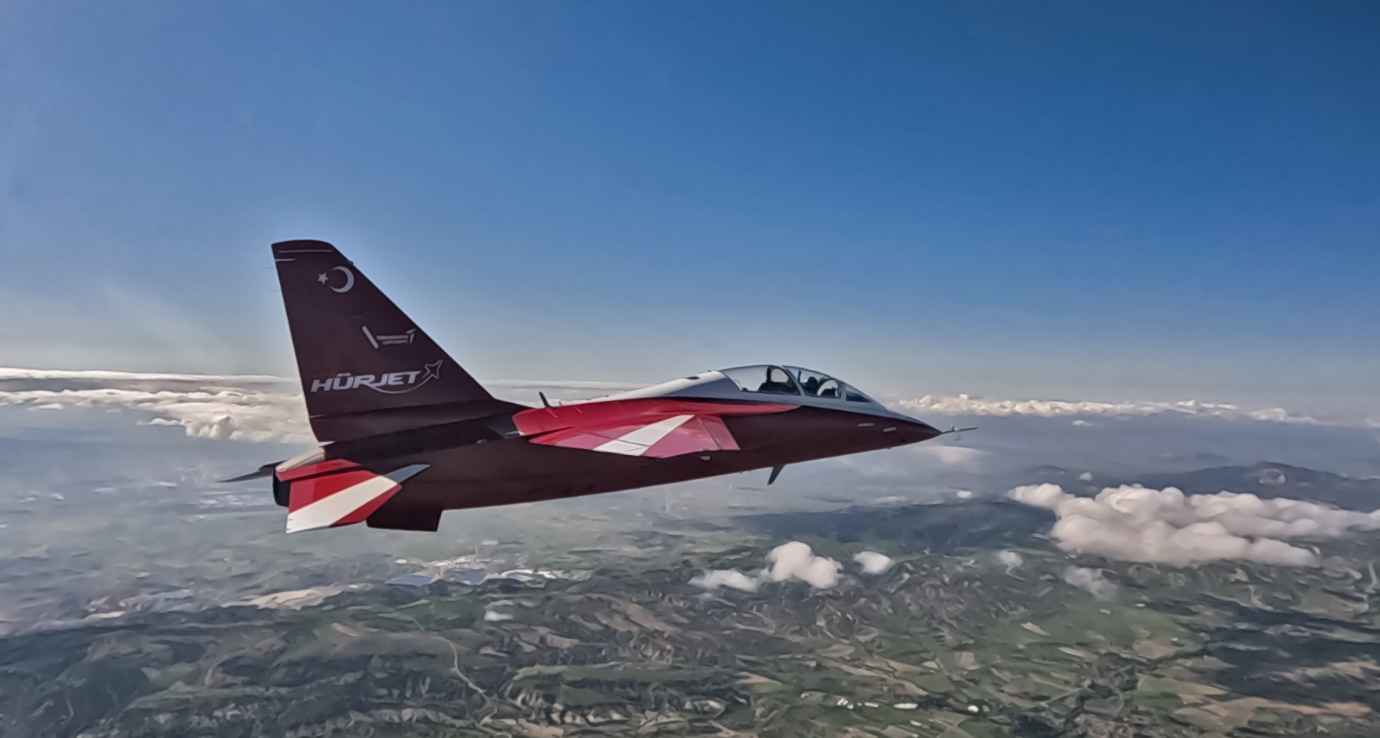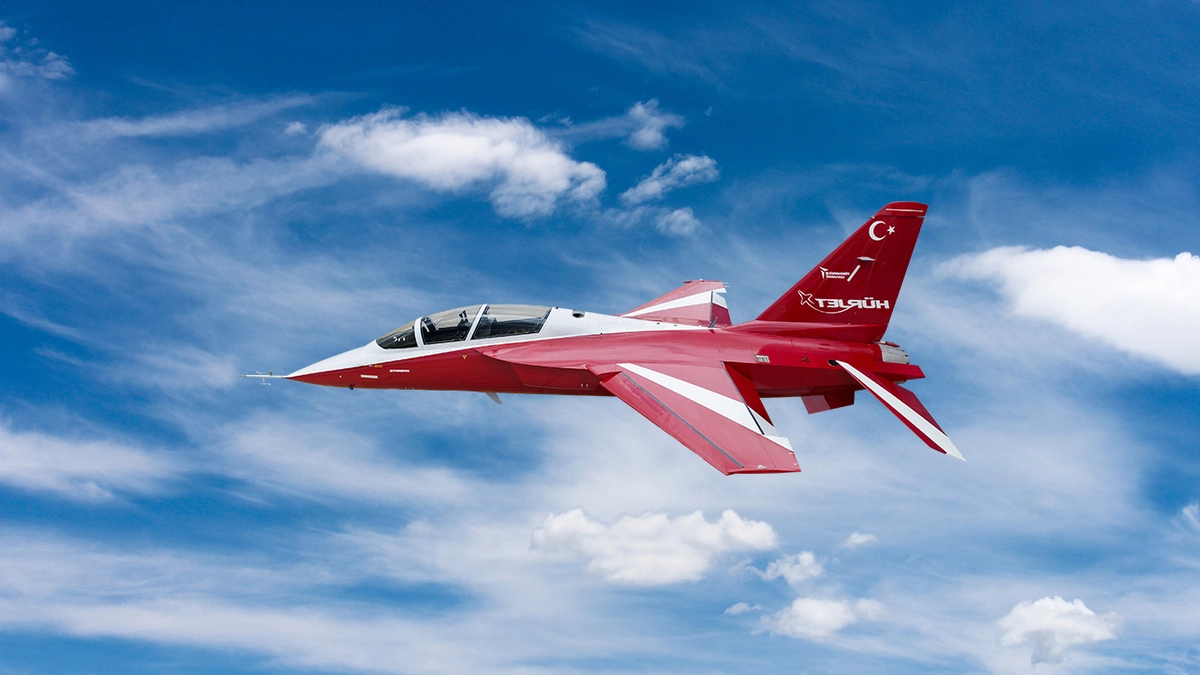During the International Defense Industry Fair (IDEF 2025) in Istanbul, Turkish Aerospace Industries (TAI) and Airbus formalized a partnership to supply Spain with up to 30 Herjet Advanced Jet Trainers. The agreement establishes an industrial workshare framework and outlines the roles of each partner in the delivery and support of the aircraft.
The first tranche of aircraft is expected to be delivered starting in 2028. The deal is a major milestone for both TAI and the Herjet platform as they enter the European defense market.

- (Turkish Aircraft Industries)
Joint Industrial Workshare and Local Production
Airbus will lead a Spanish consortium of defense companies involved in the local production of subsystems and avionics. The program is expected to proceed in phases:
- Initial Delivery (2028–2030): Turkey will supply the aircraft in the Block-1 configuration, which is already in production for the Turkish Air Force.
- Follow-on Batch: These units will integrate Spanish-developed systems and avionics to meet national certification and operational standards.
This phased approach aims to accelerate the retirement of Spain’s aging F-5M aircraft, while giving local industry time to develop.
Platform Capabilities
The Hürjet is Turkey’s first indigenously developed supersonic jet trainer and light combat aircraft. Designed for both lead-in fighter training and light attack missions, it features:
- Tandem seating
- Advanced glass cockpit
- Top speed of Mach 1.4
- Compatibility with a variety of ammunition and targeting pods
The aircraft has completed over 200 flight tests and is qualified for domestic service.
- At TAI Hürjet Teknofest 2019. (CeeGee/Wikimedia)
Strategic implications
For Spain
The acquisition supports Spain’s goal of modernizing its pilot training pipeline in anticipation of future systems such as the Future Combat Air System (FCAS). The inclusion of Spanish companies in the supply chain is also consistent with industrial sovereignty goals and provides economic returns.
For Turkey
This marks Turkey’s first confirmed military aircraft export to a European NATO ally. It enhances the country’s defense export portfolio and deepens its integration into the Western aerospace supply chain – despite past political tensions between Ankara and the EU.
“This partnership demonstrates the growing confidence in Turkish aerospace engineering and demonstrates Hurrjet’s competitiveness on a global scale,” said Temel Kotil, CEO of Turkish Aerospace Industries.
Broad Export Prospects
Analysts believe the deal could position Hurjet as a contender for other NATO and non-NATO air forces seeking cost-effective, supersonic trainers. Potential future bids could include the US Navy’s T-45 replacement program and Latin American modernization efforts.
If successful, the partnership could expand beyond just aircraft sales to include joint ventures in simulation, training and systems integration.
- (Turkish Aircraft Industries)
Conclusion
The TAI-Airbus deal marks a significant development in the European defense landscape. For Spain, it brings a next-generation trainer with an industrial offset. For Turkey, it supports its growing stature as a defense exporter capable of collaborating with major European players. With deliveries set to begin by 2028, the Herjet is poised to take its place in Europe’s skies – a symbol of both technological advancement and strategic renaissance.
Read More: Drug Cartel Operatives Infiltrated Ukraine to Train as FPV Drone Pilots
FAQs
TAI and Airbus have joined hands to sell 30 Hürjet advanced jet trainers to Spain. The deal involves shared production between Turkish and Spanish companies, with the first jets to be delivered from 2028. The partnership also boosts Spain’s pilot training program and modernizes its air force.
The Hürjet is Turkey’s first supersonic jet trainer and light attack aircraft. It can fly up to Mach 1.4, has advanced glass cockpit technology, tandem seating for instructors and trainees, and can carry a variety of weapons and targeting systems. It is designed to both train new fighter pilots and perform light combat missions.
Spanish defense companies will manufacture some of the aircraft’s parts and avionics locally. Initially, Turkey will deliver the first jets, and subsequent batches will include Spanish-made systems to meet local regulations and standards. This helps grow Spain’s industry, while also helping to replace aging F-5M aircraft.
Yes! Experts say the deal could make the Herjet popular with other NATO and non-NATO countries looking for a cost-effective supersonic trainer. It could also compete for programs such as the US Navy’s T-45 replacement or pilot training upgrades in Latin America. In the future, the partnership could expand to simulation, training and joint aerospace projects.








Leave a Reply